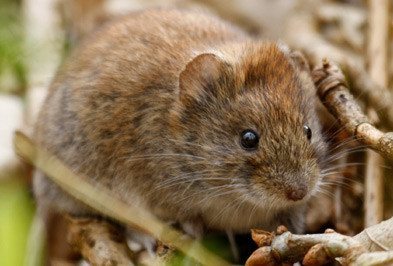Professional Methods for Vole Control and Avoidance
Professional Methods for Vole Control and Avoidance
Blog Article
Comprehensive Guide to Effective Vole Pest Control: Infestation Recognition and Therapy Methods
In the realm of reliable insect control, vole problems position a distinct obstacle that demands a critical approach. By checking out the subtleties of vole behavior, recognizing essential indicators of problem, and assessing an array of control choices, one can develop a detailed strategy to deal with these evasive parasites.
Understanding Vole Habits
Vole behavior is characterized by their delving behaviors and fast recreation rates, making them a challenging pest to regulate effectively. Their rapid reproductive price further complicates control efforts, with females qualified of creating several clutters in a solitary year, each consisting of a number of offspring.
Comprehending vole actions is important for reliable bug control strategies. By recognizing their burrow areas, checking feeding areas, and implementing targeted control techniques, such as capturing or environment adjustment, vole infestations can be handled successfully.
Indicators of Vole Invasion

Avoidance Techniques
Executing effective prevention strategies is essential in reducing vole infestations and safeguarding vegetation from their destructive feeding behaviors. To stop vole invasions, it is vital to start by eliminating possible food resources and shelter.
Routinely evaluating the residential or commercial property for indicators of vole activity, such as paths and burrow openings, is vital for very early detection and punctual action. If vole activity is suspected, consider making use of traps or repellents strategically put near their paths.
Non-Lethal Control Methods
To successfully take care of vole populations while prioritizing gentle approaches, non-lethal control strategies provide functional remedies for reducing vole damage in gardens and landscapes. One efficient technique is the usage of physical obstacles such as equipment towel or wire mesh to safeguard prone plants. These barriers can be hidden a minimum of 12 inches curved and deep at a 90-degree angle to stop voles from tunneling underneath. In addition, habitat modification can prevent voles by reducing their liked food sources and hiding places. site here Keeping a well-mowed lawn, removing debris, and maintaining plant life cut can make the setting much less enticing to voles.
Lethal Control Options
One efficient method for resolving vole invasions in yards and landscapes includes the calculated check these guys out use deadly control alternatives. When confronted with an extreme vole infestation that non-lethal techniques have actually stopped working to contain, applying lethal control procedures becomes crucial. One commonly utilized lethal control alternative is making use of snap catches. These catches are developed to promptly and humanely eliminate voles upon activation, making them a popular option for numerous garden enthusiasts and landscapers. To enhance the performance of snap traps, it is advised to position them in locations where vole activity is high, such as along runways or near burrow entryways. One more deadly control alternative is the application of harmful lures especially created to target voles. These lures contain toxin that is consumed by the voles, causing their ultimate death. Care needs to be worked out when using toxic lures to prevent damage to non-target pets or family pets. Overall, when using deadly control choices, it is necessary to do so responsibly and according to local laws to effectively manage vole infestations.
Verdict
Finally, efficient vole insect control requires a detailed understanding of vole habits, identification of signs of infestation, implementation of prevention approaches, and application of both dangerous and non-lethal control methods. By incorporating these methods, people can efficiently manage vole populations and safeguard their building from damage. It is important to attend to vole infestations without delay to stop further concerns and reduce the effect on the surrounding setting.
Given the intricate passage systems and fast recreation rates characteristic of voles, recognizing the indicators of vole invasion comes to be essential in effective insect control. One of the key signs of vole existence is the presence of surface runways or routes additional hints in grass or snow, normally about 1-2 inches broad, developed as voles take a trip between their burrows and food sources.To successfully take care of vole populations while prioritizing gentle approaches, non-lethal control methods provide sensible options for decreasing vole damage in gardens and landscapes.One reliable approach for attending to vole invasions in gardens and landscapes involves the calculated usage of lethal control choices. vole pest control.In final thought, efficient vole bug control needs a thorough understanding of vole behavior, identification of indications of problem, implementation of avoidance approaches, and utilization of both non-lethal and deadly control approaches
Report this page